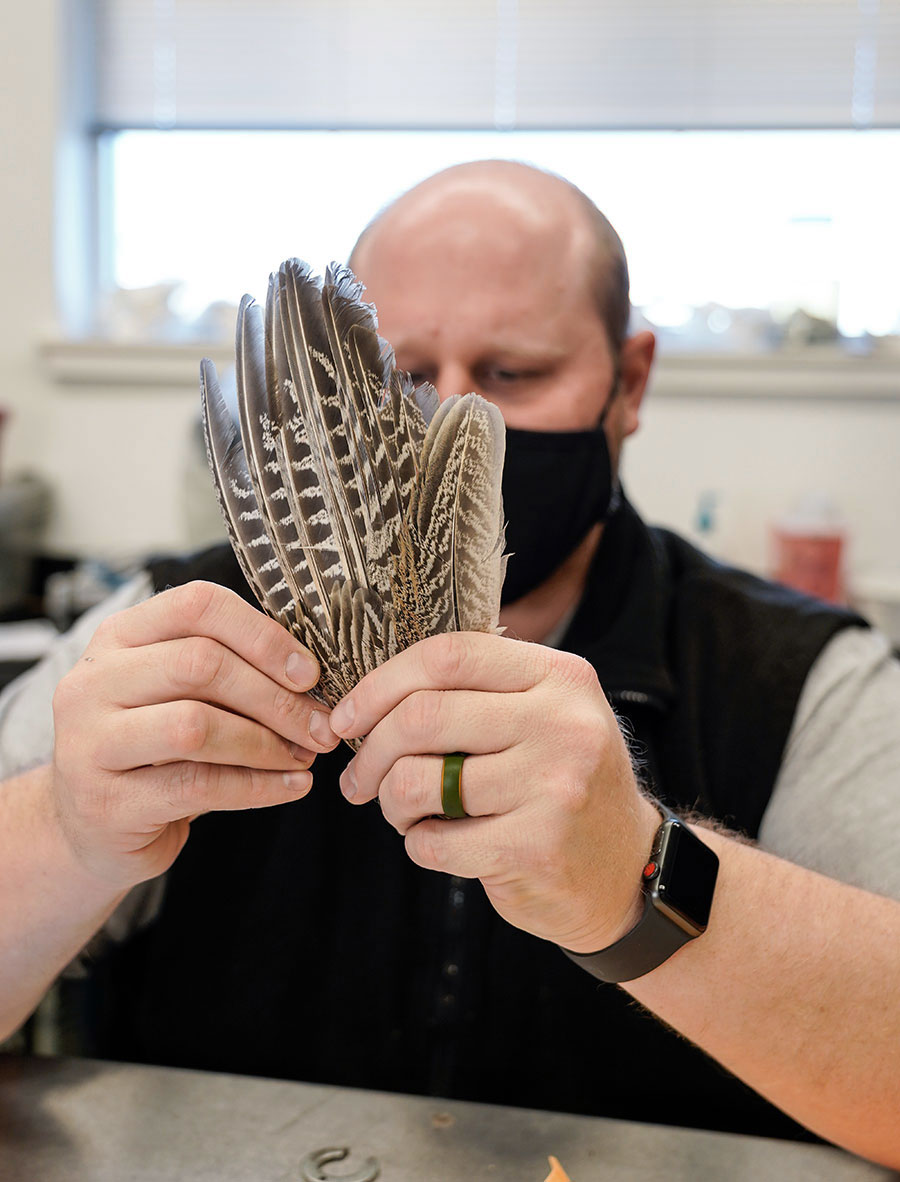
Buffaloberry Patch
Hunter Education Classes
Individuals interested in taking a hunter education class in 2021 must click on the education link at the North Dakota Game and Fish Department website, gf.nd.gov.
Brian Schaffer, Department hunter education coordinator, said students wanting to take an in-person class are reminded to register early, as most classes are held early in the calendar year.
“We are holding traditional classes once again, and social distancing guidelines must be followed such as wearing masks and sanitizing, but we are able to gather and teach some of our classes,” Schaffer said. “In combination with our ability to start meeting again through traditional classes, we're also going to increase our efforts with home study courses this year, as we did in 2020. We learned a lot from the experiences last year and we've improved the content.”
To register for a class, click on “enroll” next to the specific class, and follow the simple instructions. Personal information is required. Classes are listed by city and can also be sorted by start date. Classes will be added throughout the year as they become finalized.
Individuals interested in receiving a notice by email when each hunter education class is added, can click on the “subscribe to news and alerts” link found below the news section on the Game and Fish home page. Check the box labeled “hunter education” under the education program updates.
In addition, SMS text notifications of new classes can be sent directly to a cell phone. Simply text “NDGF HunterClass” to 468311 to subscribe to this feature.
State law requires anyone born after Dec. 31, 1961, to pass a certified hunter education course to hunt in the state. Hunter education is mandatory for youth who are turning 12 years old. Children who turn age 11 during the calendar year can take the class.
Waterfowl Harvest Monitoring
Scholarships Available for Students
The North Dakota Game Wardens Association and the Ray Goetz Memorial Fund are sponsoring scholarships for graduating high school seniors or current higher education students interested in majoring in wildlife law enforcement or a related field.
Applicants must be North Dakota residents, be in good academic standing and have an interest in wildlife law enforcement or a related field. Scholarships will be awarded in fall upon proof of enrollment.
Applications are available by contacting the North Dakota Game Warden’s Association, ndgamewardens@gmail.com. Applications must be received no later than May 31.
Top Whoppers Club Applications for 2020
- Walleye – 13 pounds, 15 ounces, Stump Lake; 13-8, Lake Sakakawea; 13-6, Stump Lake; 12-10, Missouri River; 12-7, Missouri River.
- Northern Pike – 34-7, Irvine-Alice-Mikes Complex; 28-9, Lake Sakakawea; 26-6, Brush Lake; 25-12, Lake Sakakawea; 24-13, Missouri River.
- Yellow Perch – 2-8, Devils Lake; 2-2, Cleveland Slough; 2-2, Eckelson Lake North; 2-1, Irvine-Alice-Mikes Complex; 2-1, Long Lake (Burleigh County).
- Smallmouth Bass – 5-0, South (Hoffer) McClusky; 5-0, Lake Oahe; 4-15, Heart Butte Reservoir; 4-11, Lake Ashtabula; 4-9, Heart Butte Reservoir.
- Chinook Salmon – 16-1, Missouri River; 15-5, Lake Sakakawea; 15-4, Missouri River; 14-0, Lake Sakakawea; 13-1, Missouri River.
- Brown Trout – 11-6, Missouri River; 5-2, Missouri River.
- Rainbow Trout – 16-10, Missouri River; 13-2, Missouri River; 13-1, Missouri River; 13-0, Camp Loop Pond; 11-8, Camp Loop Pond; 11-4, Missouri River.
- Sauger – 4-4, Yellowstone River.
- White Bass – 4-8, Lake Ashtabula; 3-9, Irvine-Alice-Mikes Complex; 3-1, Missouri River.
- Channel Catfish – 23-10, Red River; 22-0, Red River; 18-8, Lake Sakakawea; 16-8, Sheyenne River; 15-1, Sheyenne River.
- Crappie – 2-7, Trenton Lake; 2-1, Wilson Dam; 2-1, Trenton Lake; 2-0, Lake Oahe; 2-0, Lake Oahe.
- Black Bullhead – 3-0, Sanborn WPA.
- Bluegill – 1-9, Smishek Lake.
- Buffalo – 31-8, Lake Audubon; 23-14, Lake Oahe.
- Burbot – 15-4, Missouri River; 10-6, Missouri River; 8-12, Missouri River; 8-2, Missouri River.
- Common Carp – 21-3, Little Muddy River; 18-10, Long Lake (Burleigh County); 15-5, Lake Sakakawea.
- Freshwater Drum – 7-10, Lake Sakakawea.
- Lake Trout – 7-12, Missouri River.
- Lake Whitefish – 4-7, Missouri River; 4-2, Lake Sakakawea.



